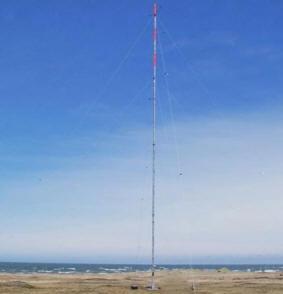|
|||||||||||||||||
|
|
|
|||
|
By Steve Hall |
||||
 |
Many METs fall just below the 200-foot Federal Aviation
Administration (FAA) threshold for obstruction markings.
They can also be erected quickly and without notice to
the local aviation community, depending upon their
location.
Because of their size and color, pilots have reported
difficulty seeing METs from the air. Therefore, METs
could interfere with low-flying aircraft operations,
including those involving helicopter emergency medical
services, law enforcement, animal damage control, fish
and wildlife, agriculture, and aerial fire suppression. |
|||
|
On January
10, 2011, at 1057 Pacific standard time, N4977X, a Rockwell
International S-2R, impacted a meteorological tower (met tower)
during an aerial application on
According
to the Federal Aviation Administration inspector that responded
to the accident site, the pilot had been applying seed when the
accident occurred. Witnesses indicated that the pilot overflew
the area and then began a pass over the field. Witnesses did not
report seeing the airplane perform any evasive maneuvers prior
to the impact. The fact that these towers are narrow, unmarked,
and grey in color makes for a structure that is nearly invisible
under some atmospheric conditions.
The land
owner indicated that the met tower on |
||||
|
On May 19, 2005,
an Air Tractor AT-602, N9017Z, collided with a MET that was erected 15
days before the accident in Subsequently, the airplane impacted terrain, where a post impact fire ensued. There were no reported eyewitnesses to the collision with the tower. Examination of the airplane and accident site revealed that the outboard portion of the right wing was separated and found adjacent to the base of the tower.
The top three feet
of the tower was severed and had yellow paint transfer consistent with
the color of the airplane. The tower was erected 15 days prior to the
accident and was of an unpainted metal color. The tower was also not
equipped with an obstruction light. A weather observation system
approximately 29 miles northwest of the accident site reported an
overcast cloud ceiling at 25,000 feet.
On December 15,
2003, an Erickson SHA Glasair, N434SW, collided with a MET near
While
The FAA has issued
a notice of proposed rulemaking (docket number FAA-2010-1326) to update
Advisory Circular (AC) 70/7460-1K to recommend the marking of METs.
However, the NTSB is concerned that the application of the AC is
voluntary, and, without mandatory application and marking requirements
for METs, many METs will still be constructed without notice to the
aviation community and will fail to be marked appropriately. |
|
|
| ?AvStop
Online Magazine
Contact
Us
Return To News
|
|

